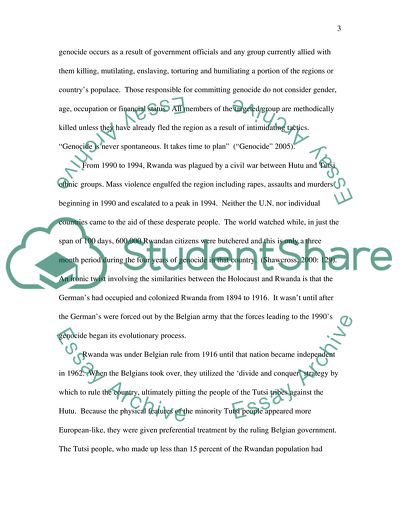Cite this document
(Why Genocides Occur Case Study Example | Topics and Well Written Essays - 2250 words, n.d.)
Why Genocides Occur Case Study Example | Topics and Well Written Essays - 2250 words. Retrieved from https://studentshare.org/sociology/1711368-why-genocides-occur-compare-examples-of-holocaust-and-rwanda
Why Genocides Occur Case Study Example | Topics and Well Written Essays - 2250 words. Retrieved from https://studentshare.org/sociology/1711368-why-genocides-occur-compare-examples-of-holocaust-and-rwanda
(Why Genocides Occur Case Study Example | Topics and Well Written Essays - 2250 Words)
Why Genocides Occur Case Study Example | Topics and Well Written Essays - 2250 Words. https://studentshare.org/sociology/1711368-why-genocides-occur-compare-examples-of-holocaust-and-rwanda.
Why Genocides Occur Case Study Example | Topics and Well Written Essays - 2250 Words. https://studentshare.org/sociology/1711368-why-genocides-occur-compare-examples-of-holocaust-and-rwanda.
“Why Genocides Occur Case Study Example | Topics and Well Written Essays - 2250 Words”. https://studentshare.org/sociology/1711368-why-genocides-occur-compare-examples-of-holocaust-and-rwanda.


